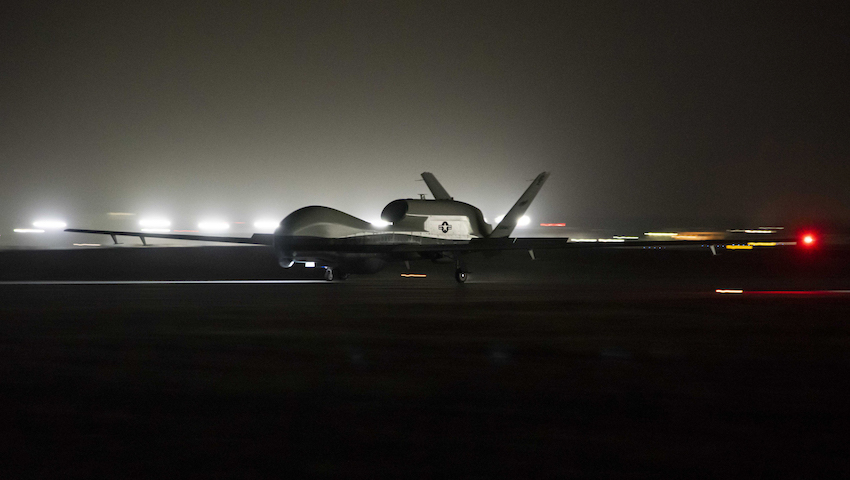Promoted by Northrop Grumman
Australia’s strategic circumstances continue to evolve quickly. Moreover, the regional security environment is on a trajectory that has been causing real concern in the national security community and, more recently, in the general community. As a consequence, the Government has responded clearly and concisely with the recent publication of the 2020 Defence Strategic Update (2020 DSU).
The 2020 DSU highlights ways in which Australia’s national interests might be threatened, including major power competition, the expansion of ‘grey-zone’ activities and regional force modernisation. Consequently, the update focuses defence planning on the immediate region and concludes “Defence must be better prepared for the prospect of high-intensity conflict.”
Moving forward, Australia will seek to shape the environment, deter actions against Australia’s interests and be ready to respond with military force. To do so, Australia will depend on the force in being, along with those capabilities described in the 2020 Force Structure Plan (2020 FSP). While most of the commentary around the 2020 FSP has focused on the long-range strike elements, which clearly sit in the deter and respond objectives, we should not lose sight of the need for Australia to monitor, share information and ultimately understand the nature of the threats in the region and how they continue to evolve. Without this insight, Australia’s efforts at shaping and deterring potential adversaries will be ill informed and ineffective.
Sovereign airborne and space-based intelligence, surveillance and reconnaissance (ISR) capabilities will be crucial in providing a regional picture for Australia. That is not to say that ISR is not equally important in a response scenario, rather that Australia’s goal must be to reduce the necessity of a military response by excelling at shaping outcomes and deterring would-be threats.
The Australian Government’s commitment to high-altitude, long-endurance ISR capabilities such as the MQ-4C Triton will go a long way to providing Defence with the sovereign ability to understand the full expanse of our region without being dependent on other allies or commercial providers. Triton will be part of a suite of ISR capabilities that will give Australia ‘ISR in Depth.’ These advanced platforms, though, are only part of the answer to understanding the region.
Secure and resilient networks will form the means for ISR information to move between platforms and the people and systems that need the information to make informed decisions. For shape and deter activities, this information might move more slowly and deliberately and may even include lower classification information that we share with our regional partners. It is not hard to imagine a Triton providing a near-real-time maritime surface picture to the Forum Fisheries Agency in Honiara so they can cue partner countries who might then respond to suspected illegal activity with a Guardian Class patrol boat. As an aside, it is worth noting that Triton can patrol the Exclusive Economic Zones of Southwest Pacific countries – stretching from Papua New Guinea to Fiji in a single mission – while operating out of RAAF Base Tindal.
At the higher end of the ISR spectrum, networks that support 5th-generation operations will be needed. ISR operations can actually create a deterrence effect through visible, persistent operations, backed by resilient networks. In fact, the US Centre for Strategic and Budgetary Assessments recently coined the term ‘Deterrence by Detection’ in a paper that argued, “real-time situational awareness is critical to countering the twin challenges of sub-conventional grey-zone aggression and a conventional fait accompli gambit promptly and effectively.” The idea here is that potential adversaries who know they are being watched in real time are less likely to conduct opportunistic aggression. For this to work, Australia would need to work with allies to provide persistent ISR over areas of intelligence interest. A layered ‘ISR in Depth’ approach is also required here, as weather and other factors like basing access will limit the effectiveness of any one ISR capability.
In this scenario, Australian Tritons might be complemented by P-8A Poseidons, MQ-9B Sky Guardians, and space-based assets, along with allied capabilities to provide persistent, real-time ISR in a location that could provide the most effective deterrent. In all cases, robust, resilient, cyber-worthy networks will ensure decision-makers have access to the situational awareness and information they need.
Technology and new operational concepts will also have a role to play in the last piece of this ISR information puzzle – the ability to process the huge volumes of information that are on the network. Advanced systems will allow us to expand the functionality of our own capabilities, and get the best value from our ISR investments.
Artificial intelligence and machine learning will play a vital role here along with new thinking about how response decisions are made. The advent of hypersonic weapons will demand decisions prior to events, not during the event. Humans will probably be too slow to make real time decisions so ‘human-machine teaming’ will become more prevalent. Our ability to use data will be the means by which we maintain a comparative advantage over our adversaries.
Australia’s 2020 FSP and the ISR capabilities it brings will be vital to the realisation the 2020 DSU. The real test now for the Government will be in delivering these capabilities quickly to achieve this vision.
 Login
Login






